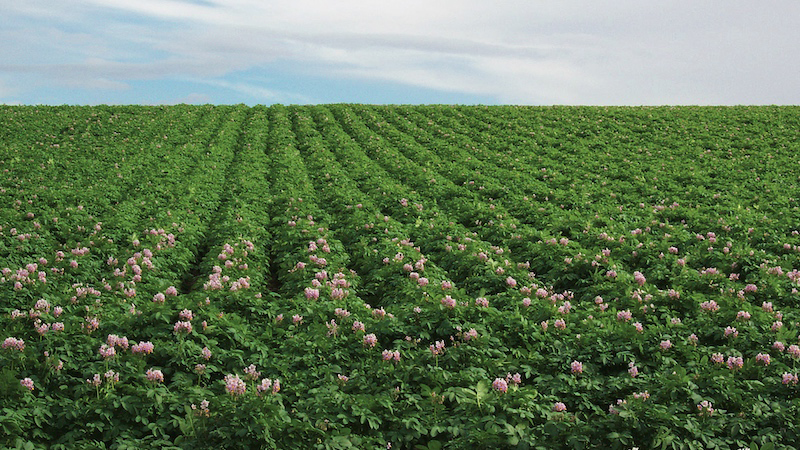Refuse to Let Fusarium Wilt Waylay Your Lettuce Crop

Fusarium wilt of lettuce was spotted this past year in South Florida.
Photo by Richard Raid
Fusarium wilt of lettuce, caused by Fusarium oxysporum f. sp. lactucae, is an important disease affecting lettuce production in many countries throughout the world. In the U.S., the disease was first reported in 1990 and is now common in California and Arizona. In the past year, it has been detected in Florida in the Everglades Agricultural Area.
Identification
Fusarium invades lettuce plants through small roots, then grows within the xylem tissue, which transports water and nutrients from roots to plant foliage. As the pathogen advances into the plant taproot and lower stem, the xylem tissue becomes plugged by the fungus, resulting in restricted water uptake, wilting, and often plant death.
In older plants, leaves turn yellow and develop tipburn. Plants infected when older may survive but are usually stunted and may fail to form heads. Taproots of infected plants look normal externally; however, examination of internal tissue usually reveals brown to black vascular discoloration in the leaves, and the presence of a reddish-brown discoloration in the cortex of the crown and upper root.
Survival and Spread
The pathogen can be seedborne, which provides a mechanism for long distance dispersal and likely explains its arrival in Florida. Locally, it can be moved between fields with contaminated soil on farming equipment. Minimizing opportunities for introduction of the pathogen with soil or seed is an important element of disease management. Once established, the pathogen will be difficult to eradicate.
There are more than 100 known “forma speciales (f. sp.)” of Fusarium oxysporum, each causing disease on one to a few specific plant species. F. oxysporum f. sp. lactucae is known to cause disease and visible symptoms only on lettuce.
Research has shown the lettuce Fusarium pathogen can colonize roots of tomato, broccoli, cauliflower, and spinach plants without causing disease symptoms. In addition, the pathogen can live on dead plant tissue when living host plants are not available, enabling the pathogen to survive in soil almost indefinitely.
Management Methods
Growers should use clean certified disease-free seed. Sanitation is extremely important to minimize movement of the pathogen from field to field. Effectively preventing the spread of the disease from infested to non-infested fields requires thoroughly removing contaminated soil from tractors, farm equipment, irrigation pipe, harvesting equipment, and footwear before leaving the infested field.
Treatment of soil with a pre-plant application of a fumigant may reduce disease incidence at crop maturity. Fungicides applied at planting appear to have no suppressive effect on development of Fusarium wilt on susceptible lettuce varieties and none have been shown to be effective.
Soil temperature has a profound effect on development of Fusarium wilt of lettuce. Planting later in the lettuce production season when soils are cooler can dramatically reduce disease incidence and crop loss in infested fields.
Varietal susceptibility can vary greatly. Disease incidence on romaine lettuce is generally much lower than that on crisphead varieties. Possible future development of resistant lettuce varieties may provide the best hope for managing this disease in the future.










